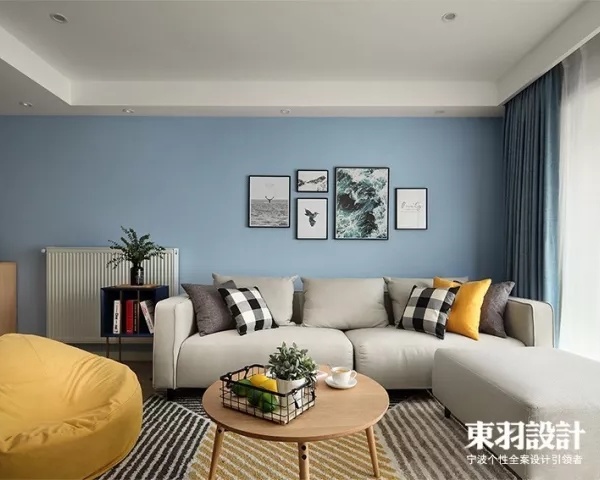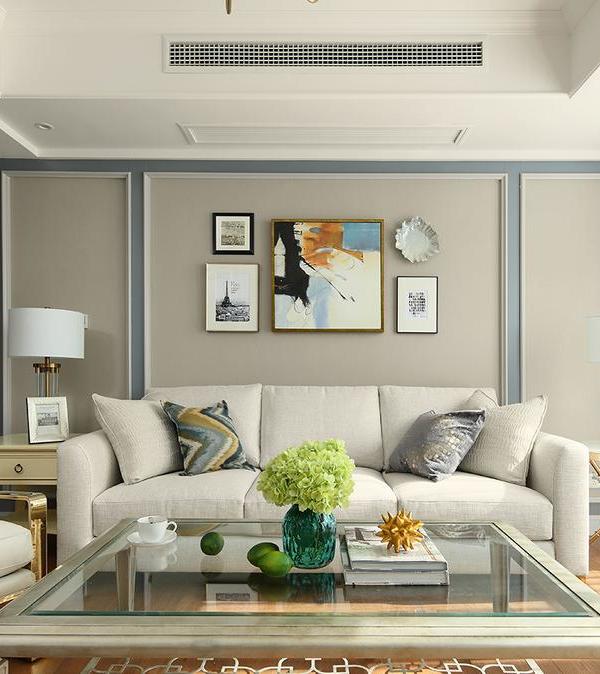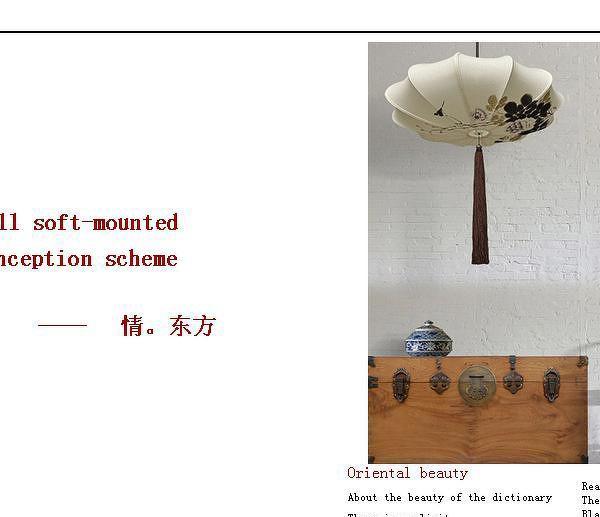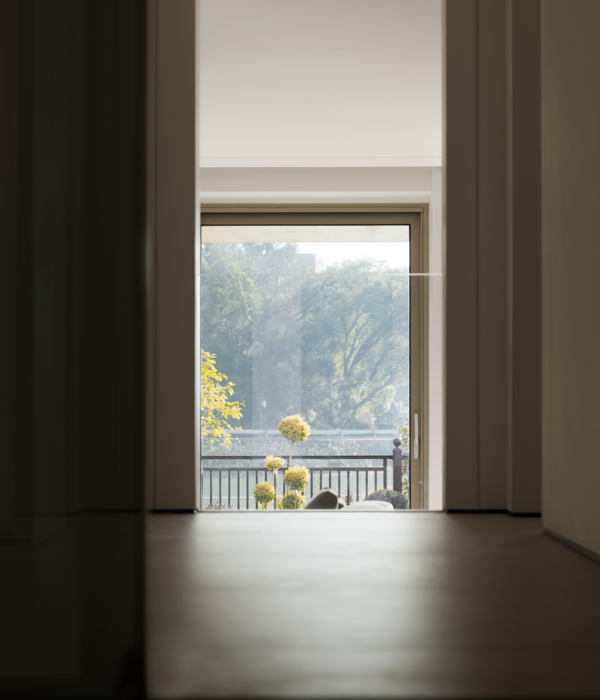“我希望Aedas可以成为中国最信任的设计师。不仅仅是最大的或者最好的,而是最值得信赖的。”
“We want to be China’s most trusted architect and designer, not just China’s biggest or best but most trusted.”
关于北京About Beijing
“北京已经制定了如此大规模的规划,拥有广阔的建筑空间,且城市尺度比其他城市要大,因此有必要开发高密度、混合型高层商业,以及满足生活、工作、休闲等多种需求的活力城市。”
“Because Beijing has developed this very capacious planning, it has a lot of room for buildings and since it has a bigger scale than other cities, there is a need to develop a high density and mix commercial high-rise, live, work, recreate and dynamic city.”
您认为北京这座城市有哪些优点和缺点? What do you think are the good and bad of Beijing?
从1992年开始,我大概每年要来北京六七次。北京是一座非常美丽的城市,有着优美的网格肌理和完善的环线道路系统,各种交通设施比如地下交通也非常棒。城市在总体规划之下有条不紊。北京或许是全中国城市规划最优秀的城市:景观相互融合,建筑高度受到严格把控,城市天际线优美,这对于城市景观的营造来说是十分重要的。在优秀的总体规划下,古建筑得到了良好的保护,高层建筑也远离历史街区。建筑之间保持了良好的间距,避免了因密集而造成的拥挤。相较于高楼林立、建筑物密集的香港,以上这些都是北京所特有的优点。
而提到北京的劣势,很多人都会想到环境污染。我们北京办公室的员工就深有体会。因此北京这座城市的未来发展值得探讨。庞大的总体规划使北京获得了更多的城市空间。北京的未来发展将趋向于高密度,商住混合,高层居住、工作、休闲等。北京将如何以自己的特色来回应这种发展变化是非常值得关注的。我相信北京会找到适合自己的发展方式,建筑师们也将为此出谋划策。几乎所有的中国城市都面临着这样的问题。由于耕地的限制,城市发展需要更新现有土地,需要发展城市中心,降低公建成本,更专注于城市的可持续发展。在此情形下,北京必然要对城市的现有地块进行高密度的再开发,而有趣之处在于,如何在实现这些发展的同时仍然保持住强有力的北京特色。
I have been coming here since 1992 and I’m here six or seven times a year. Beijing is such a beautifully planned city. It has got a great grid system, ring road system, and subway system as well, so in terms of infrastructure it is excellent. Also there has been very good planning control in Beijing, probably the best in China. The buildings are planned very well. The neutralisation of the sites is very good indeed. Height control has been excellent here, so we have a city which has got a very nice, beautiful skyline, which is also important. Ancient buildings are well protected by planning control, so it’s not crowded with the high buildings all around them. Within the sites, there is always plenty of land around the buildings. So one of the characteristics of Beijing is that buildings have room around them and they are not too congested and pushed up tight each together, very different compared to Hong Kong.
Speaking about the down side, of course everybody is going to say the same things of pollution and that needs to be tackled. We have an office here, it is difficult for the people here because they experience very bad pollution. So where is it going to go next is interesting. Because Beijing has developed this very capacious planning, it has a lot of room for buildings and since it has a bigger scale than other cities, there is a need to develop a high density and mix commercial, high-rise, live, work, recreate and dynamic city. It will be very interesting to see how Beijing respond to that, and Beijing’s version of high density and high-rise. I’m sure Beijing will find its way, and the architects will come up with the solutions to meet the planning requirements of Beijing. Because all cities in China are going to do this, we need to use brown field sites, to develop in the heart of city, to minimise our infrastructure costs and to make the city more sustainable. So with that, Beijing is certainly going to re-develop the existing parts to higher density, and it will be very interesting to have that achieved while still maintaining the very strong Beijing character.
▼北京财富中心第一期,Fortune Plaza Phase 1, Beijing
▼北京新浪总部大楼,Sina Plaza, Beijing
▼北京大望京二号地项目,由Andrew Bromberg at Aedas设计,Da Wang Jing Plot #2 Mixed-use Development, Beijing, designed by Andrew Bromberg at Aedas
▼北京大兴西红门综合开发项目,由Andrew Bromberg at Aedas设计,Xihongmen Mixed-use Development, Daxing District, Beijing, designed by Andrew Bromberg at Aedas
大城市的可持续发展Sustainability in large cities
“可持续发展最明显、最根本的方法是高密度的生活模式和超高层的生活空间……同时也要注重城市绿化,不能忘记公共空间对于居民生活的重要性……实现城市可持续发展的另一举措是智慧城市,也就是将基础设施以及服务设施紧密连接起来。”
“The most obvious root to sustainability is again high density and high-rise…I expect to go green as well. It’s very important to remember that the public needs space… the other aspect to sustainability is the smart city and connecting up all of our infrastructure and service providers.”
您认为对于像北京这样的大城市而言,什么才是可持续发展切实可行的办法?In your opinion, what is the practical way to sustainable development for metropolises like Beijing?
在建筑之前,让我们先来从城市的角度来审视这个问题。需要再次强调的是,可持续发展最明显、最根本的方法是高密度的生活模式和超高层的生活空间。居民的工作和生活空间越密集,他们日常通勤的时间和距离也就越短,城市的扩张也会因此放缓。城市在变得更紧凑的同时,也将实现自身的可持续性。
不可否认的是,城市的密集发展也会带来各种问题。过于紧凑的环境使城市的热岛效应增强,噪音问题严重。因此,我希望在密集发展的同时也要注重城市绿化。回到刚才的问题,在我们开始践行高密度生活的同时,依然不能忘记公共空间对于居民生活的重要性。高层建筑并非被街道环绕着的孤立单体,我们还要考虑与其配套的公共空间,包括地下和地上的各个楼层,以及户外停车场。这些公共空间的营造也将帮助我们解决城市的可持续发展问题。当高层建筑通过上层步行交通和花园实现良好连接时,城市街道将能够完全用于机动车行驶,公共空间也将移居到高层或地下空间,城市会因此变得更加具有可持续性,因为相比乘坐出租汽车,城市居民可能更倾向于步行。
实现城市可持续发展的另一举措是智慧城市,也就是将基础设施以及服务设施紧密连接起来。从技术自控系统,到自然控制系统,到电梯可以识别你的声音并带你到达正确的楼层。尽管每一个举措的贡献都是十分微小的,但它们共同为城市节省了大量的能源。以高层建筑中的电梯系统举例,这种程序化的运行方式使电梯能够辨认其乘坐者,比如当我走进电梯,它便能断定我要去31层,同时询问乘坐电梯的哪些乘客也是去往31层的。如此,高层电梯的运行将更加高效,而电梯运行所消耗的能源也将减半。与此同时,当我们将这种运行电梯的方式用于公共汽车站、无人驾驶汽车和最短路线规划,当我们将大数据用于城市运行时,大城市的能源消耗更将大幅减少。
Well let’s stay on the urban scale first before looking at the building scale. The most obvious root to sustainability is again high density and high-rise. Because the more densely we can bring people to live and work together, the less the commuting time and travel distance. There will be less pollution, and urban sprawl. So we can compact our cities, then they will be more sustainable.
Of course compaction leads to other issues as well. If you compact too much you get heat and sounds built up. For that I expect to go green as well. And again going back to what I was talking about, that when we actually carry out high density development, it’s very important to remember that the public needs space. We can’t simply put high density towers with streets surrounding it. We need to have more public spaces, floors above and underground, skyparks. Generating public space will also solve a large number of problems for sustainability. Because if you create walkways and parks that are pleasant to walk through at high level to connect buildings, then the street will become a place for vehicles, and the public will migrate to higher levels or subterranean. And that will be sustainable itself because people want to walk instead of taking taxis.
So the other aspect to sustainability is the smart city and connecting up all of our infrastructure and service providers, from the level of the automatic control in the buildings, through to the level of the natural system arriving at the same point same time, to lifts arriving when people arrive at lobbies. When you go to the correct floors, you call the lift to the mobile device, and the lifts recognise your mobile devices. All of those little things add up can save a huge amount of energy. And if you are in a lift system in a high-rise building, it’s programmed, according to the individual needs of the attendance of the occupants in the building. It will recognise me when I go in. It will say “oh he’s going to level 31, who else is going to level 31? ” And that lift will become more efficient. Therefore that lift system uses half the amount of energy it’s currently using. And if you take that from lift systems to bus transportation, to driverless cars going by the shortest routes to all sorts of systems, when you connect up all of that big data technology, to run a city efficiently, the energy use will halve.
▼青岛金茂湾购物中心,Qingdao Jinmao Harbour Shopping Center
▼重庆新华书店集团公司解放碑时尚文化城,Chongqing Xinhua Bookstore Group Jiefangbei Book City Mixed-use Project, Chongqing
▼大连恒隆广场,Olympia 66, Dalian
▼印度尼西亚雅加达联合利华总部大楼,Unilever Headquarters, Jakarta, Indonesia
Aedas的发展之路Development of Aedas
“我希望在我的公司里,每一位员工都能充满活力和动力。Aedas希望为大型社区和大型城市做设计。我们在高密度城市,高层建筑,机场,火车站等基础设施以及它们与城市的整体性建设中有非常丰富的经验。”
“I wanted to create a company where people are truly incentivised to do great things. Aedas wants to design for large communities, for large cities. We have a lot of skill sets in designing high density, high-rise infrastructure, airports, railway stations, and integrating these in very, very complicated cities.”
Aedas是在何种背景下创立的?这些年来,Aedas是如何发展至如今的规模的?What was the background of the founding of Aedas? Could you please talk about the turning points in the history of Aedas’ growth?
公司是在1985年创立的,也就是我来香港三年以后。我1982年来香港,在成立公司之前,我为两家大型跨国公司工作过。其中一家是奥雅纳,公司为员工共同所有,社会性较强。另一家是福斯特事务所,更加独裁一些。我对这两种公司的运行方式都有了一定程度的领会。在奥雅纳,我们致力于用知识和力量打造人居生活和良好的生活空间。而福斯特公司则致力于打造最好的建筑,而非最好的居住生活。两家公司目的和目标不同,其一受公共利益推动,另一家则由个人意愿主导。于是当我开始着手创建自己的公司时,我想,何不将这两者融合在一起呢。我希望在我的公司里,每一位员工都能充满活力和动力。它不受某个人的主导,而是鼓励和激活全员的灵感与创意。我们知道,当人的利益得到真正满足时,他们的动力才会增加。在为别人考虑之前,大部分人都会首先在意个人的得失。我们公司有很多董事,他们每一个人都充满着动力,因为在为公司创造价值的同时,他们自己的利益也得到了保障。好的设计会帮助公司更好地经营,同时也令公司的客户更加满意。这就是我们公司的经营理念。这些董事组建了我们公司核心团队,他们为公司所做的努力都得到了回报,他们的家人和孩子都得到了保障,这都会激励他们更加努力工作,努力经营好这家公司。这就是Aedas。
We started the company in 1985, and by that time I had been in Hong Kong for 3 years. I came to Hong Kong in 1982, I worked for two very large international companies at that time. One was socialist, and the other one was dictatorial. One is ran by one person, Foster’s, and the other one was Arup’s which is a socialist company owned by all of its staff. It was communist. And I’ve seen the two ways work. Arup relies upon intellectual endeavours, creating places for people. Arup is about bettering human kind, bettering life of people; while Foster is about creating not necessarily the best of the people but the best architecture. Very different goals and aims, one company is driven by common good, and the other is driven by one person. So when I thought about my company, I thought, well, I wanted to merge these two things. I wanted to create a company where people are truly incentivised to do great things. But not just one person, but all the designers in the company truly being incentivised to do great things. And you know people can only be incentivised if they are satisfied and their personal needs are met. Most people are not kind to other people. Most people want to get on their own lives. So I structured the company where we have many owners, and all the owners are incentivised because their personal needs are met. So I just went back to basics. I redesigned the notion of company. It is how do I make people, how do I get people to do great things. Make them happy, and then they’ll move on and they’ll make other things good, they’ll fight hard and they’ll drive hard. So that is Aedas.
▼香港中环区购物中心, Aedas为置地控股设计完成了其位于中环核心区12座建筑的活化、修复及重建,Centres of Central, Hong Kong. Aedas has been in the forefront of working with Hongkong Land to revitalise, renovate and redevelop their 12 properties in the central business district of Hong Kong
在正确的公司经营理念下,我们的公司也在迅速扩张。从1985至2000年,公司人数从2人增长到200人。之后我们在全球各地都设立了办公室,我们在大家的关注下变成了真正的跨国企业。从那之后我们的发展速度更快了。在第一个15年里我们从2人发展到200人,在又一个10年的快速发展中,我们由200人增长到1500人,呈指数上升。在那之后,公司的发展仍在继续。与此同时,我们决定将公司的业务重心放在高密度,高层建筑,混合商业,城市基础设施和特殊社区建筑中,并同时解除与欧洲分公司的联系。由于欧洲分公司的业务范围已经与我们的业务方向背道而驰,它们开始脱离Aedas自主经营。Aedas希望为大型社区和大型城市做设计。我们在高密度城市,高层建筑,机场,火车站等基础设施以及它们与城市的整体性建设中有非常丰富的经验。因此在2013年,我们做出了以上决定,并遵循至今。如今我们公司的下属员工从1500人精简到1200人。
And the reason for our growth was because our formula proved to be right. Very, very quickly we grew from 2 people in 1985 to 200 people by 2000. Then we establish offices overseas, and people started to see us as being a true international company. And from there we grew very quickly. So the first growth from 2 people to 200 people took 15 years. The next growth from 200 people to 1500 people took 10 years, so that growth is exponential from there on. And from there on, we haulted the growth in 2013. We were growing too big, and we decided we would focus our work upon high density, high-rise, mix commercial, infrastructure, and specific community buildings and we would no longer work so extensively in Europe. Our offices in Europe left Aedas and went their own way. Because we didn’t see the connectivity between what they were doing and we want to do. Aedas wants to design for large communities, for large cities. We have a lot of skill sets in designing high density, high-rise infrastructure, airports, railway stations, and integrating these in very, very complicated cities. So that is what we decided, in 2013 we decided that is what we gonna focus on, from now on. So we are reducing ourselves from 1500 to 1200.
▼香港国际机场中场客运廊,Hong Kong International Airport Midfield Concourse
▼阿联酋迪拜地铁站,Dubai Metro
▼深圳宝安国际机场卫星厅,Shenzhen Airport Satellite Concourse
“我希望Aedas可以成为中国最信任的设计师。不仅仅是最大的或者最好的,而是最值得信赖的。”
“We want to be China’s most trusted architect and designer, not just China’s biggest or best but most trusted.”
Aedas在未来有何明确的发展计划?Does Aedas have a concrete plan for its future development?
我的愿景是,我希望Aedas可以成为中国最信任的设计师。不仅仅是最大的或者最好的,而是最值得信赖的。我们希望,我们的客户、政府、市长向人们阐释我们为城市所做的设计与规划时,可以让市民知道,我们并非仅代表开发商和投资者的利益,我们还考虑到政府和社区民众的广泛利益。因为在设计过程中,我们看重三方利益,即政府,客户和社区。此外,我们也十分重视城市的可持续发展。我很乐意大家将我们视为商业建筑公司,但我也希望大家可以看到我们了解城市,我们以全民利益为重,而非某些个体。
We want to be China’s most trusted architect and designer, not just China’s biggest or best but most trusted. So we would like to think that when clients and governments and mayors see what we present to them, our designs are considered not just from the point of view of maximums for the benefit of the developers, but also to the governments and the communities. Because we must satisfy the needs of these three stakeholders, the government, the client and the community. We also focus on the sustainability of cities. And I’d like us to be positioned as, yes, a commercial architectural design company, but one perceived as having a body of knowledge and concern for the greatest benefit of all, not just for one or two people.
▼广州国际金融城(总体规划),Guangzhou International Financial City
Aedas在建筑学科和人才培养方面有哪些愿景?What is Aedas’ vision and plan to drive for the industry and nurture talents?
Aedas是一家智慧型公司。对于我们来说,我们乐于培养年轻人。对于他们未来是否会加入Aedas,这并没有关系。我们与同济、清华、香港大学、巴特莱特建筑学院等都有合作。而合作也是为了培养更多的人才。Aedas是一个巨大的知识交流平台。然而在很多私人企业中,这些知识都是不公开的,这很奇怪。在Aedas,这些信息都是完全公开的,在校的学生可以很轻易地接触到和学习到。如今,随着大数据技术的快速增长,大学在校生可以很容易地与Aedas的知识交流平台近距离接触,反之亦然。所以我认为,在接下来的5到10年里,大数据还会将知识交流领域推向更宽更广的平台。大学教育的环境即将改变,课堂授课的传统方式也会改变。学生会有更多的实践机会,会获得更多资源和信息的共享平台。有更多人可以接近Aedas,从这里学习并获取知识。这就是Aedas的愿景所在。
▼Aedas于同济大学建筑与城市规划学院成立奖学金,并举办学术讲座及主题展览,Aedas established scholarship in CAUP of Tongji Univeristy and held academic lectures and themed exhibition
▼Aedas于清华大学建筑学院举办学术讲座、主题展览暨创新基金成立仪式,Aedas held academic lectures and themed exhibition in School of Architecture, Tsinghua University, followed by the establishment of innovation fund.
{{item.text_origin}}






![[原创][现代简约]北京丰台枫南世嘉家居设计 [原创][现代简约]北京丰台枫南世嘉家居设计](https://public.ff.cn/Uploads/Case/Img/2024-04-22/YfzVUnTYkCPRaUKzlZzlHXPgF.jpg-ff_s_1_600_700)
![[原创][北欧风情]北京朝阳凤凰城家居设计 [原创][北欧风情]北京朝阳凤凰城家居设计](https://public.ff.cn/Uploads/Case/Img/2024-04-22/jnoVUjyesRUclqEywaycaxYHT.jpg-ff_s_1_600_700)




